
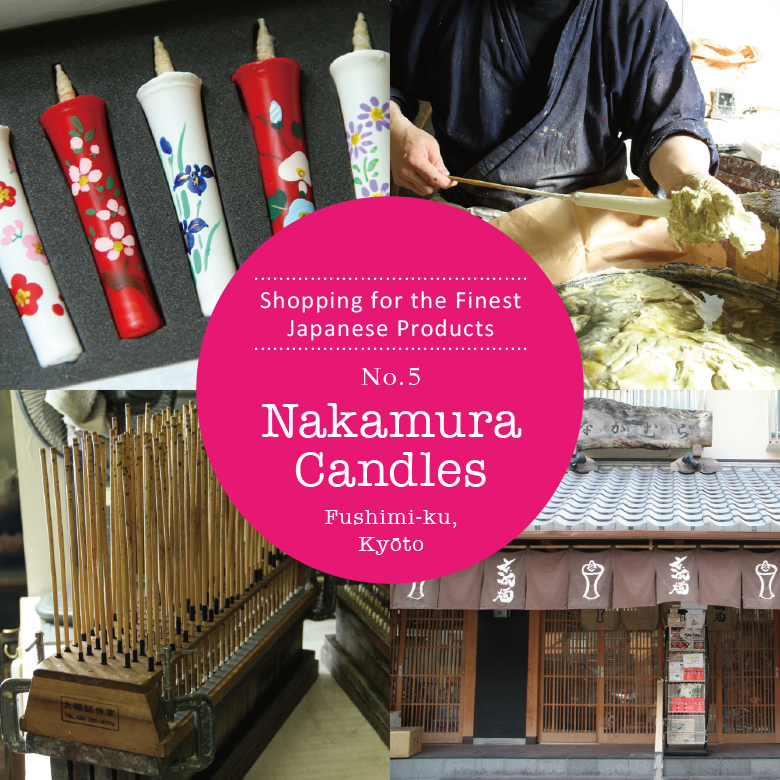
Adding warmth with the gentle glow of warōsoku – traditional handmade candles made entirely from plant-based ingredients.
Photos : 谷口哲 Akira Taniguchi / English Version : Judy Evans
Keyword : Kyōto / Artisans / Traditional Skills / Warōsoku / Traditional Japanese Candles / Kyō Rōsoku Nakamura
A faint smell of melted wax lingers in the air as we duck under the noren entrance curtain to explore “Kyō Rōsoku Nakamura” a long-established business that creates beautiful warōsoku – traditional Japanese candles. Once inside, we can see the staff working over pots of melted wax, crafting their candles as we look on, fascinated.
Hirokazu Tagawa, fourth generation head of the business, greets us. “It’s not a bad smell, is it?” he smiles. “All the ingredients come from nature and it’s a smell that people seem to grow used to very quickly.”

Kyō Rōsoku Nakamura is one of only a small number of businesses still hand-crafting candles the traditional way. Tagawa san tells us that, unfortunately, many candles sold nowadays as “warōsoku” are actually mass-produced candles made from petroleum-derived paraffin wax. Genuine warōsoku are made entirely from plant-based materials. Kyō Rōsoku Nakamura use two blends for their candles, utilising wax from the berries of the haze tree (Toxicodendron succedaneum), as well as rice-bran oil and palm oil.
Warōsoku don’t drip wax as they burn, and only emit a very small amount of smoke compared to ordinary candles. This is one of the reasons why they are a prized item in Buddhist temples, where they can be burnt without fear of ruining priceless religious objects with wax or soot. Any soot that the tiny amount of smoke does deposit is non-oily and easily removed. In fact, the tradition of susu-harai (deep cleaning) that takes place in Buddhist temples at the end of each year began as the annual job of removing candle soot from religious fixtures and fittings.
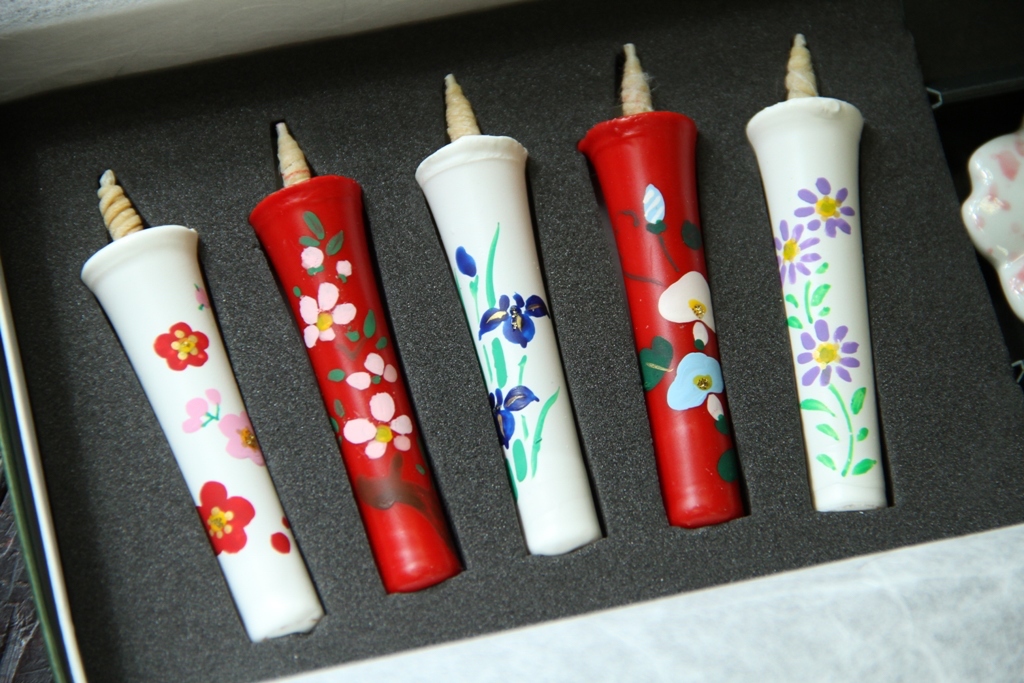
The flame of a traditional warōsoku candle emits a gentle orange light due to the low melting-point of the wax, and sways gently from side to side as it burns – even when there is no draught in the room. This movement is due to the construction of the wick, which is made by wrapping supple rush stems around tightly-rolled washi paper, resulting in a cylindrical wick with a hollow core. The air inside the wick is what causes the flame to dance.
Tagawa san explains that during the making process, long bamboo skewers are pushed through the centre of the wicks so that the candles can be hand-worked. The wicks are then placed upside-down into a wooden mould and a layer of melted wax is poured around each one to start forming the basic shape of the candle. After that, the candles are hand-coated with layers of wax until the desired shape is achieved. Finally, the bamboo skewer, which has served as a handle, is removed. Some of the candles are finished with pretty hand-painted designs, while others are left simple and unadorned.
Makers of traditional candles have to work in rhythm with the seasons. Tagawa san tells us that the time it takes for the candles to harden can be different, depending on the season. “We vary the temperature of the wax and the pace of our work to suit the season”, he explains.
Warōsoku are believed to date back more than six hundred years. More than just candles, they offer a glimpse into a time when life in Japan was closely linked to nature. Many hands contribute to the making of a single candle, from the growing and preparation of the ingredients, to the making of the wicks, to the final application and shaping of the wax.
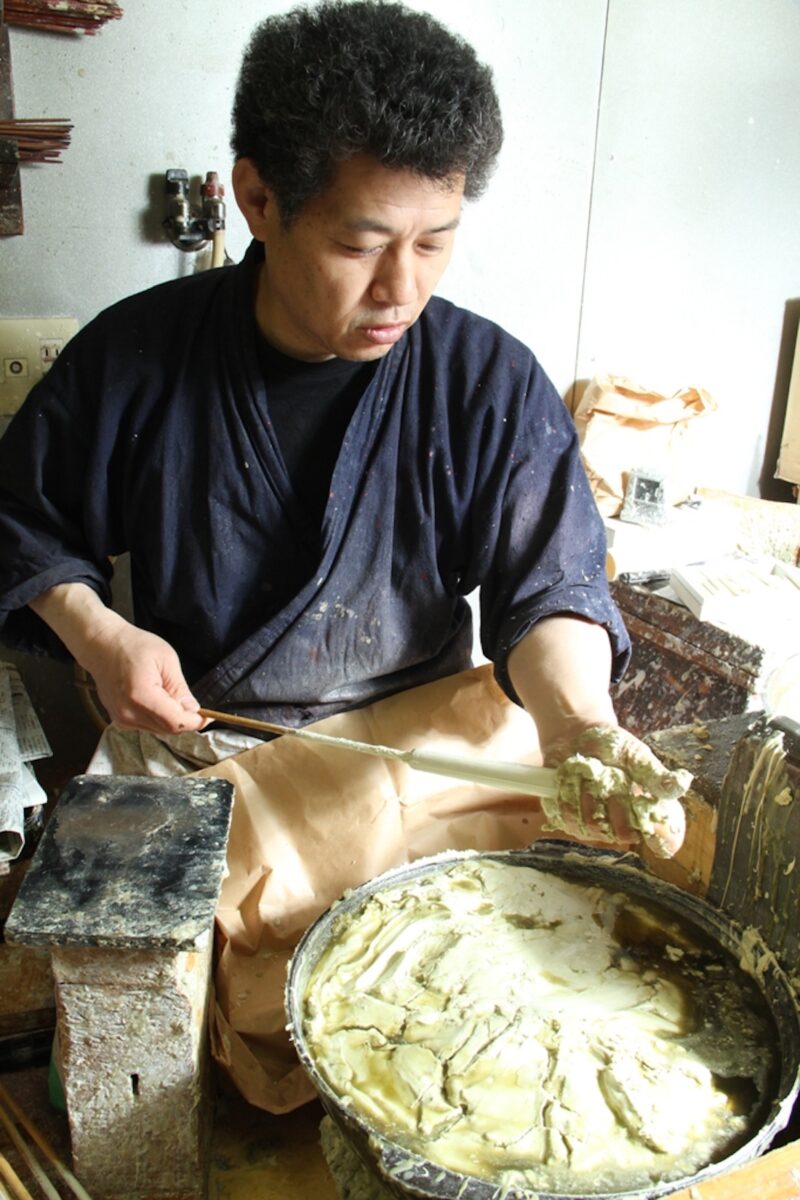
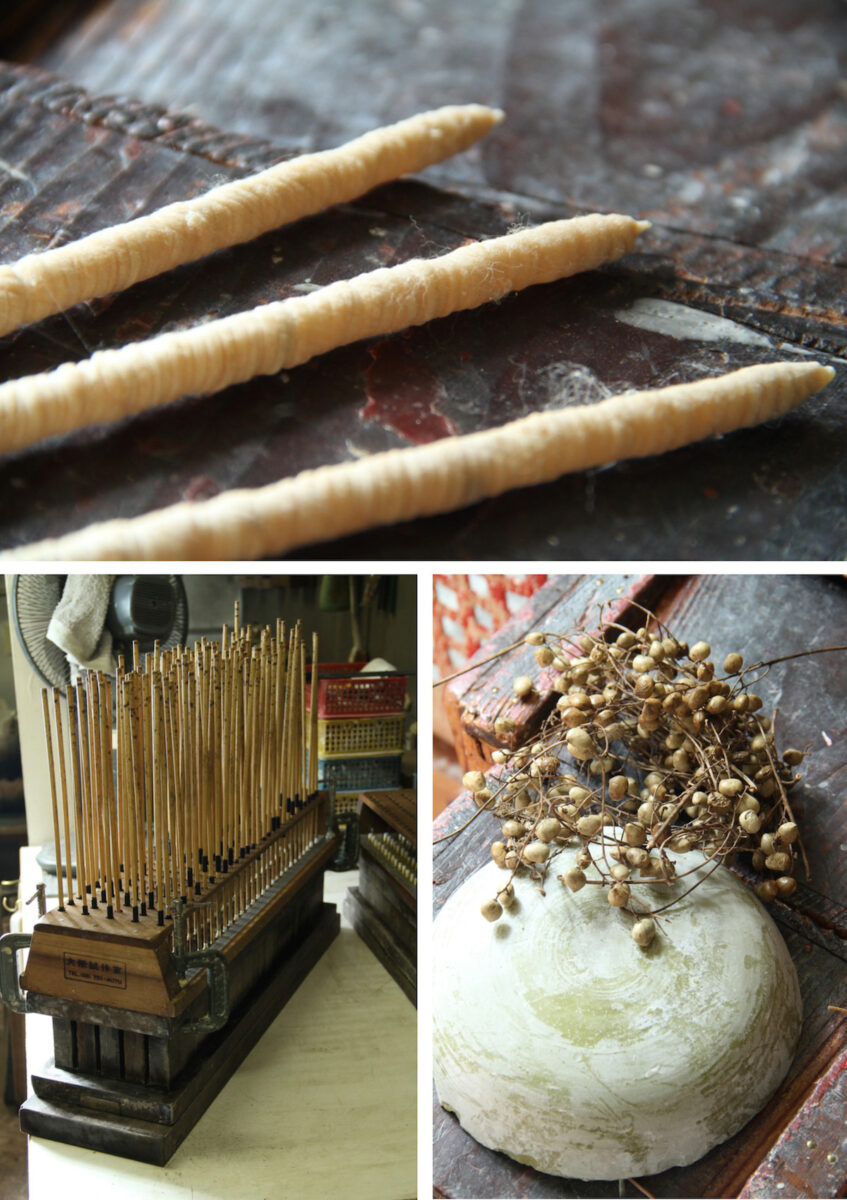
Kyō Rōsoku Nakamura (Nakamura Candle Store)
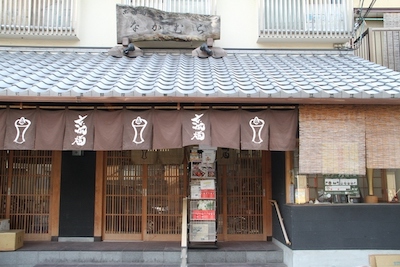
57-8 Mitsugui-chō, Takeda, Fushimi-ku, Kyōto City.
☎ 075-641-9381
https://www.kyorousoku.jp/english/ ※Items can be purchased from the website, although the online shopping section is in Japanese.
Hours: 09:00 – 17:30
Closed: Sundays; public holidays; (from January through September, closed the second and fourth Saturday of each month).
Nearest station: Approximately 5 minutes’ walk from Takeda Station – Kintestsu Line/ Subway Karasuma Line.








